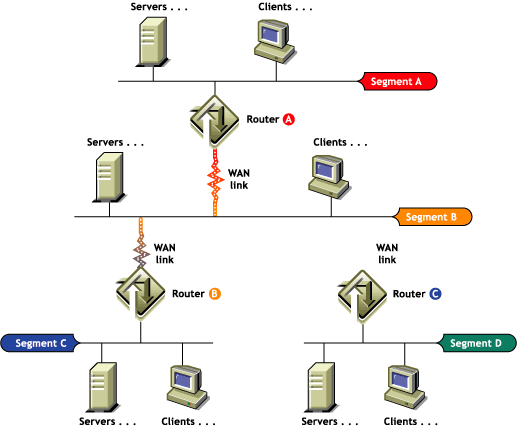3.6 Migrating the Backbone First
Migrating the backbone first alleviates administrative costs associated with maintaining IPX over the backbone. This migration path requires the following before IPX routing is disabled on the backbone:
-
Migration Agents at each of the segments connected to the backbone
-
Backbone Support feature enabled in the Migration Agents
Migration Agents with the Backbone Support feature enabled can interconnect IPX segments by exchanging RIP and SAP information and by routing encapsulated IPX datagrams.
The steps below describe how to migrate a network from IPX to IP starting with the backbone first.
-
Identify the nodes and links that form the backbone of your network.
-
Select and upgrade/install some servers in each of the segments connected to the backbone to serve as Migration Agents with the Backbone Support feature enabled.
-
Migrate the backbone section using the steps outlined in Section 3.4, Migrating a Section of the Network.
-
Select a leaf portion of the network to migrate. This can be a group of segments connected to the backbone via a WAN link. Migrate the selected portion of the network following the steps outlined in Section 3.4, Migrating a Section of the Network.
-
Repeat Step 4 until all networks connected to the backbone are migrated.
The following figure shows how the steps above are applied in a sample network.
Figure 3-3 Migrating the Backbone First

-
Identify Segment B as the backbone.
-
Upgrade/Install one or two servers in segments A, C, and D as NetWare 6 Migration Agents with the Backbone Support feature enabled.Migrate Segment B (the backbone segment) using the steps outlined in Section 3.4, Migrating a Section of the Network. Turn off IPX routing in routers A, B, and C to complete the migration of Segment B. Migrate segments A, C, and D using the steps outlined in Section 3.4, Migrating a Section of the Network.